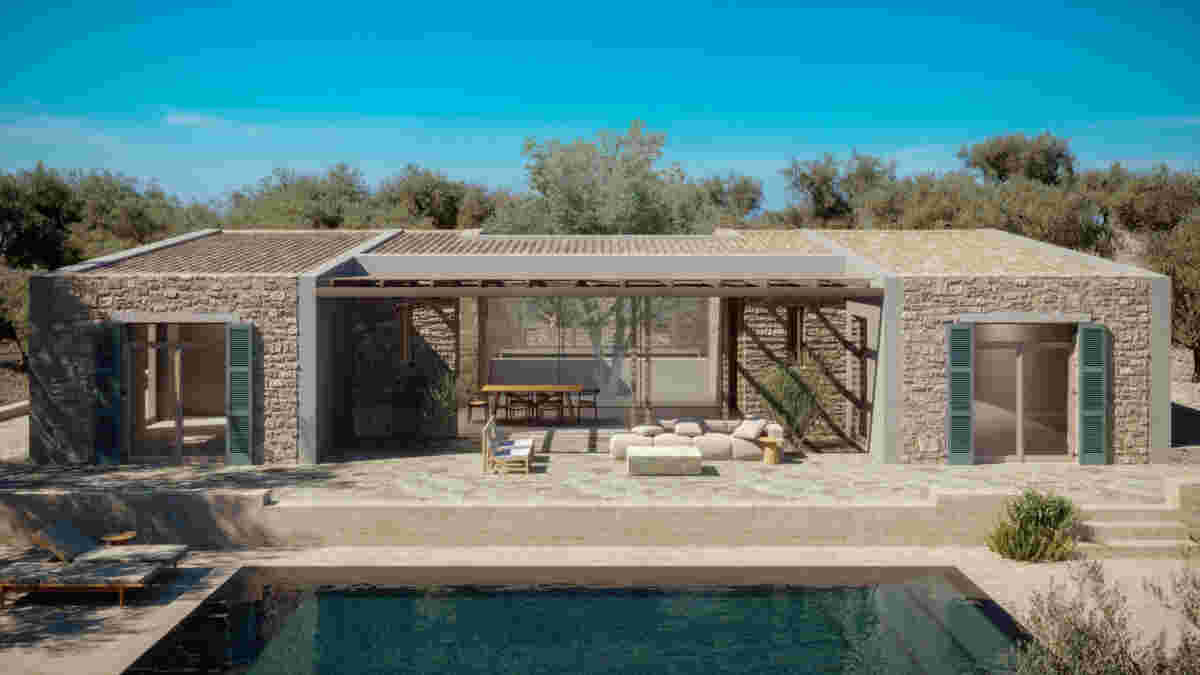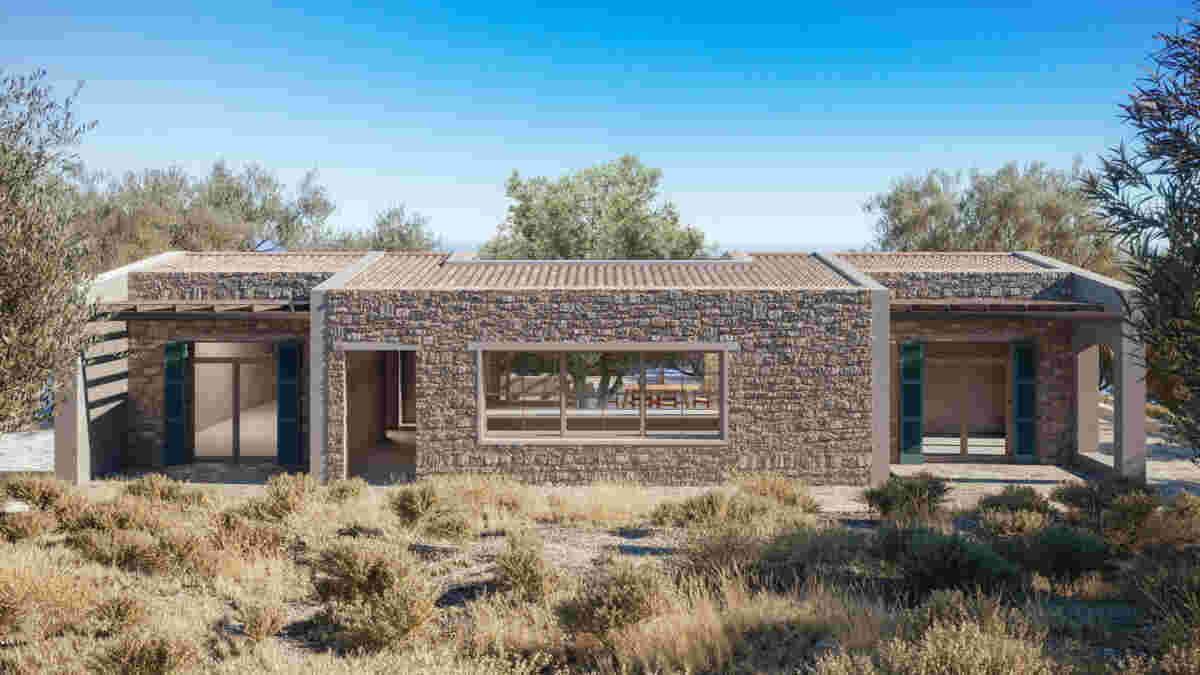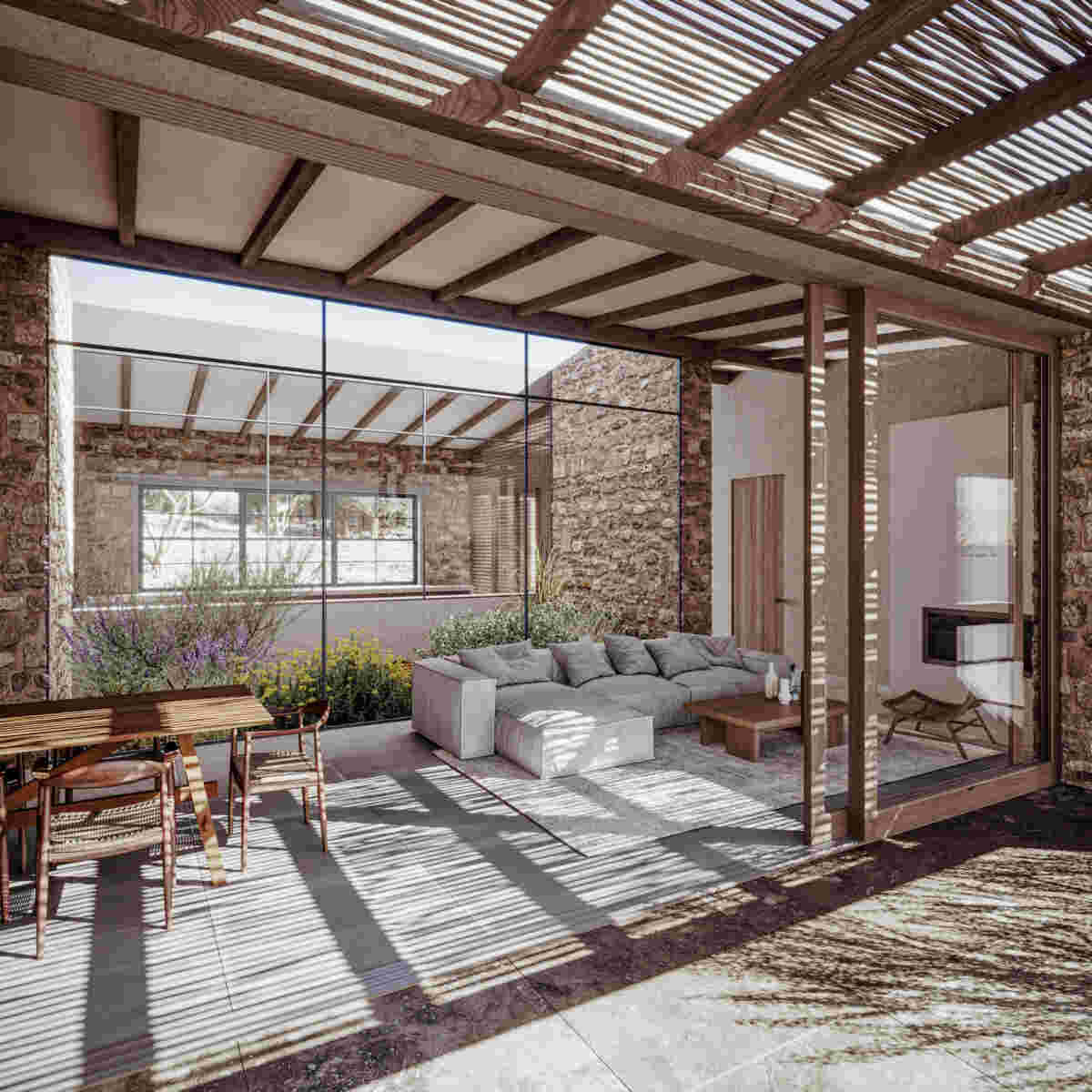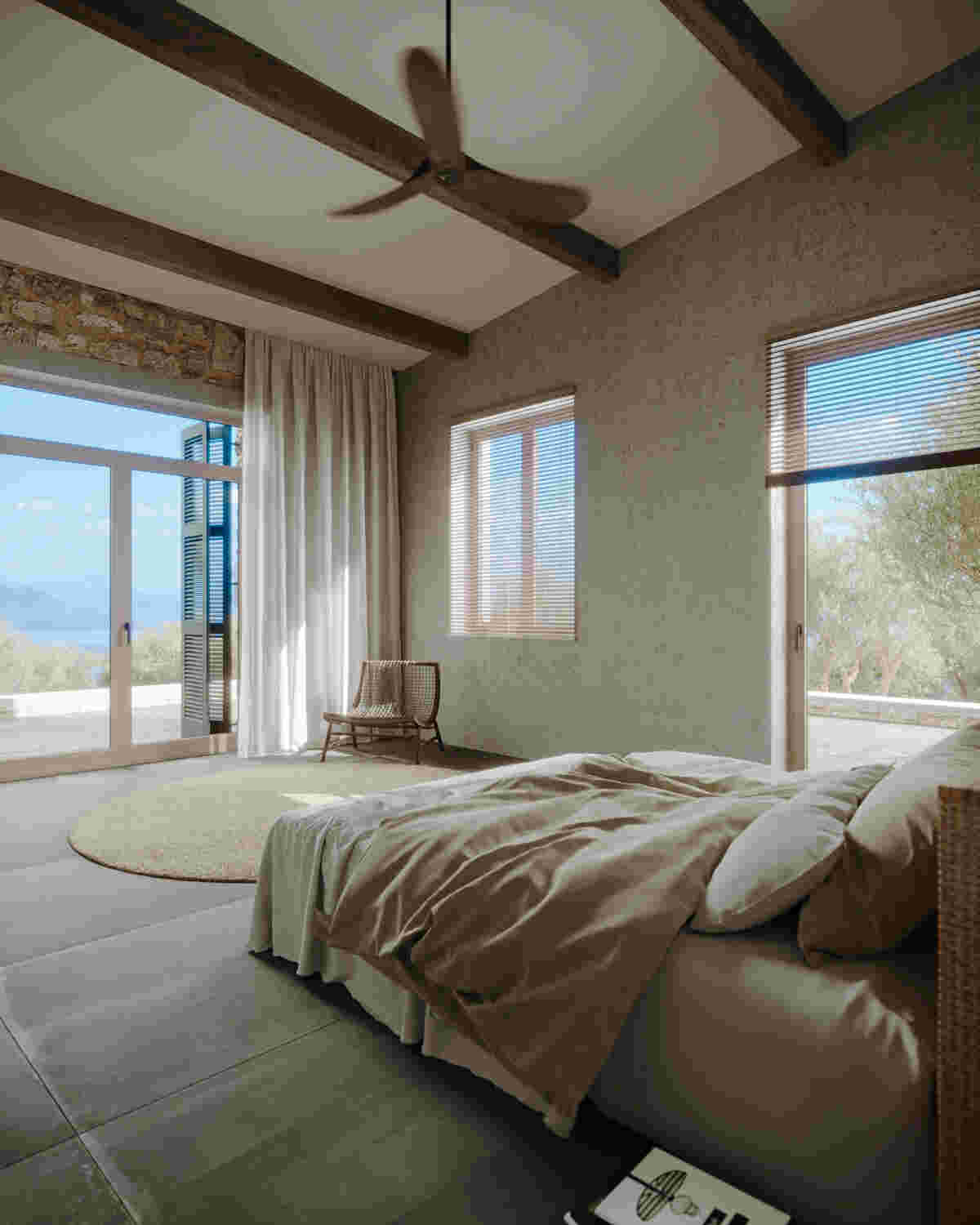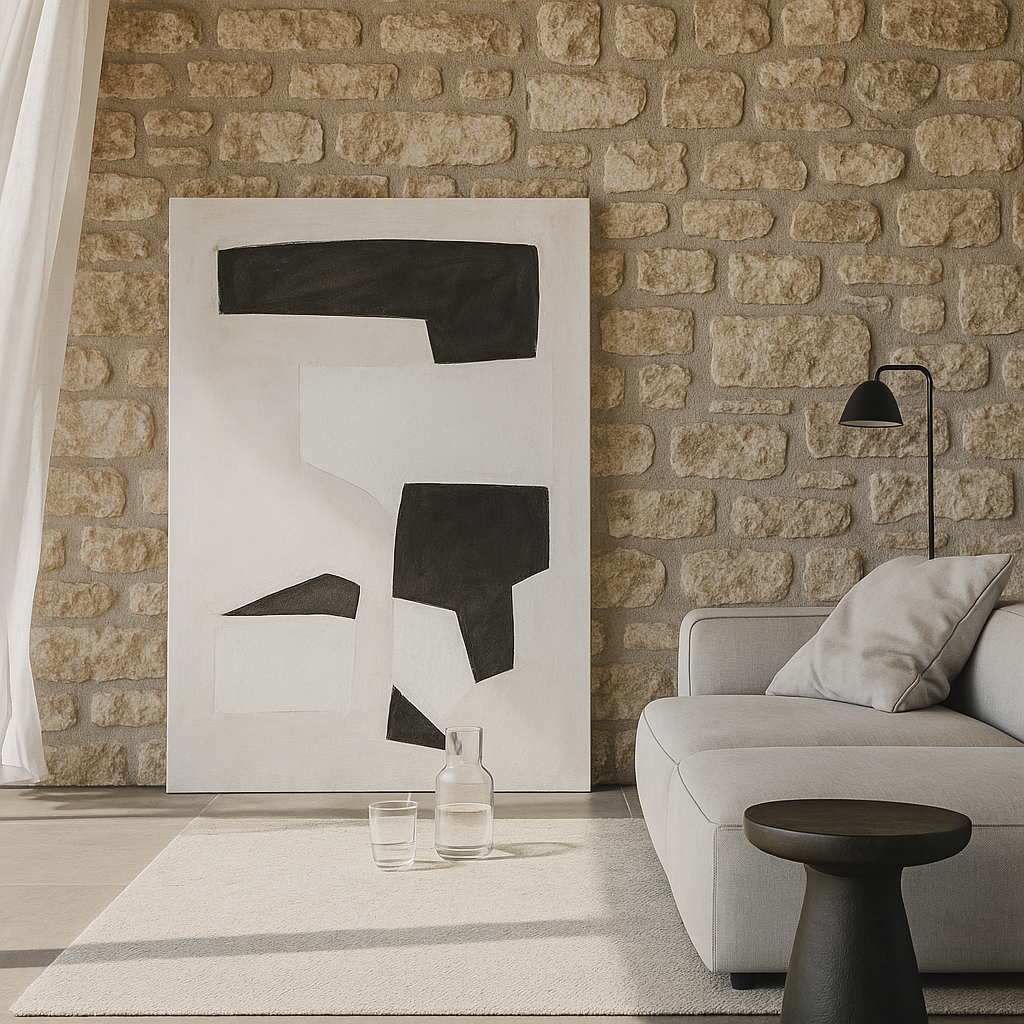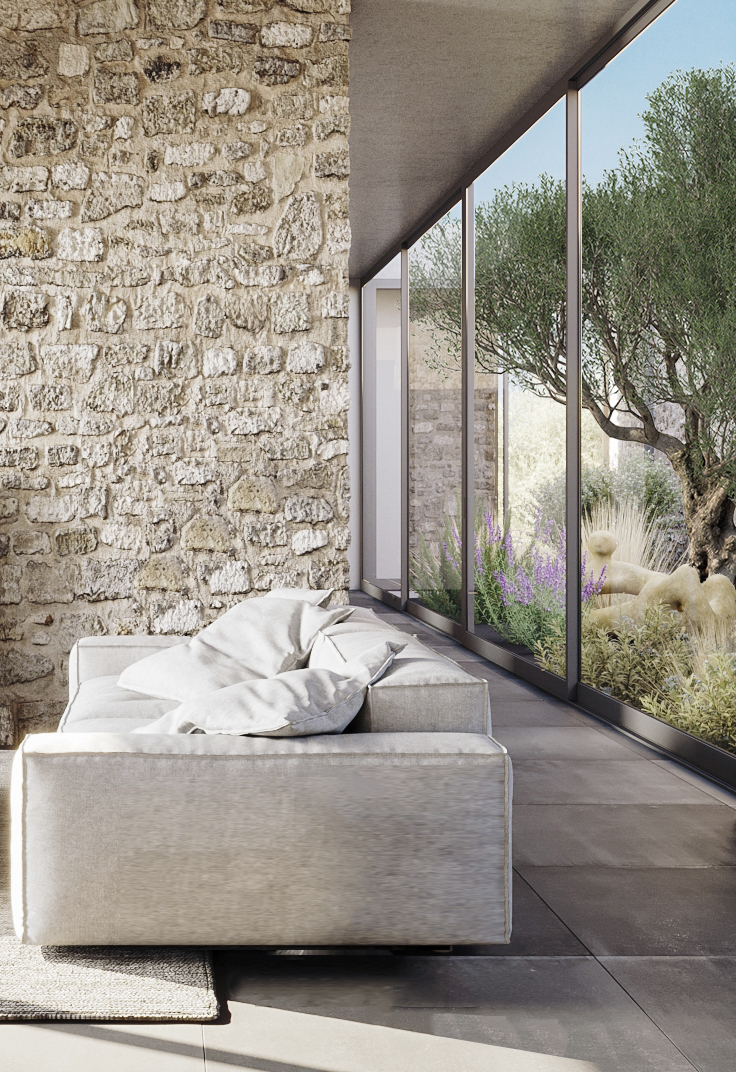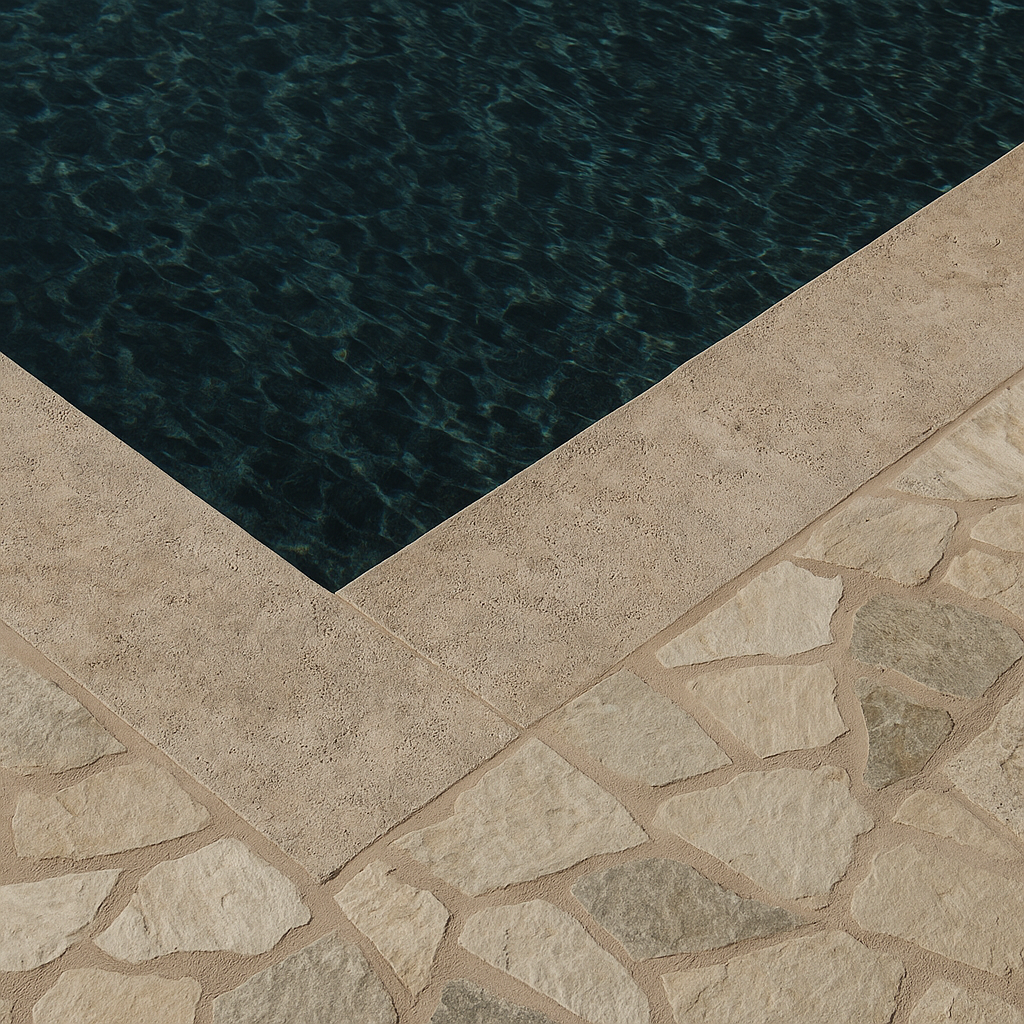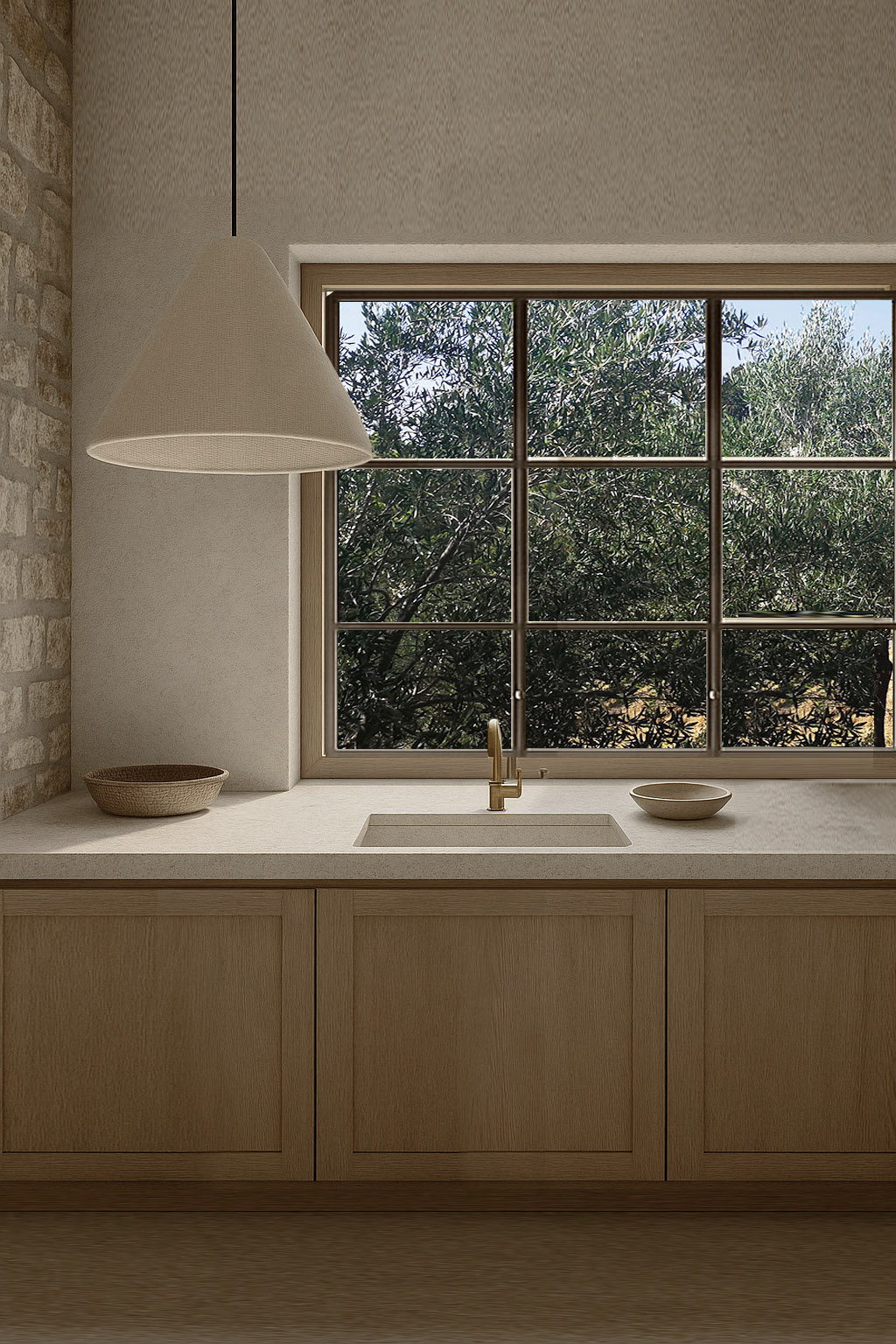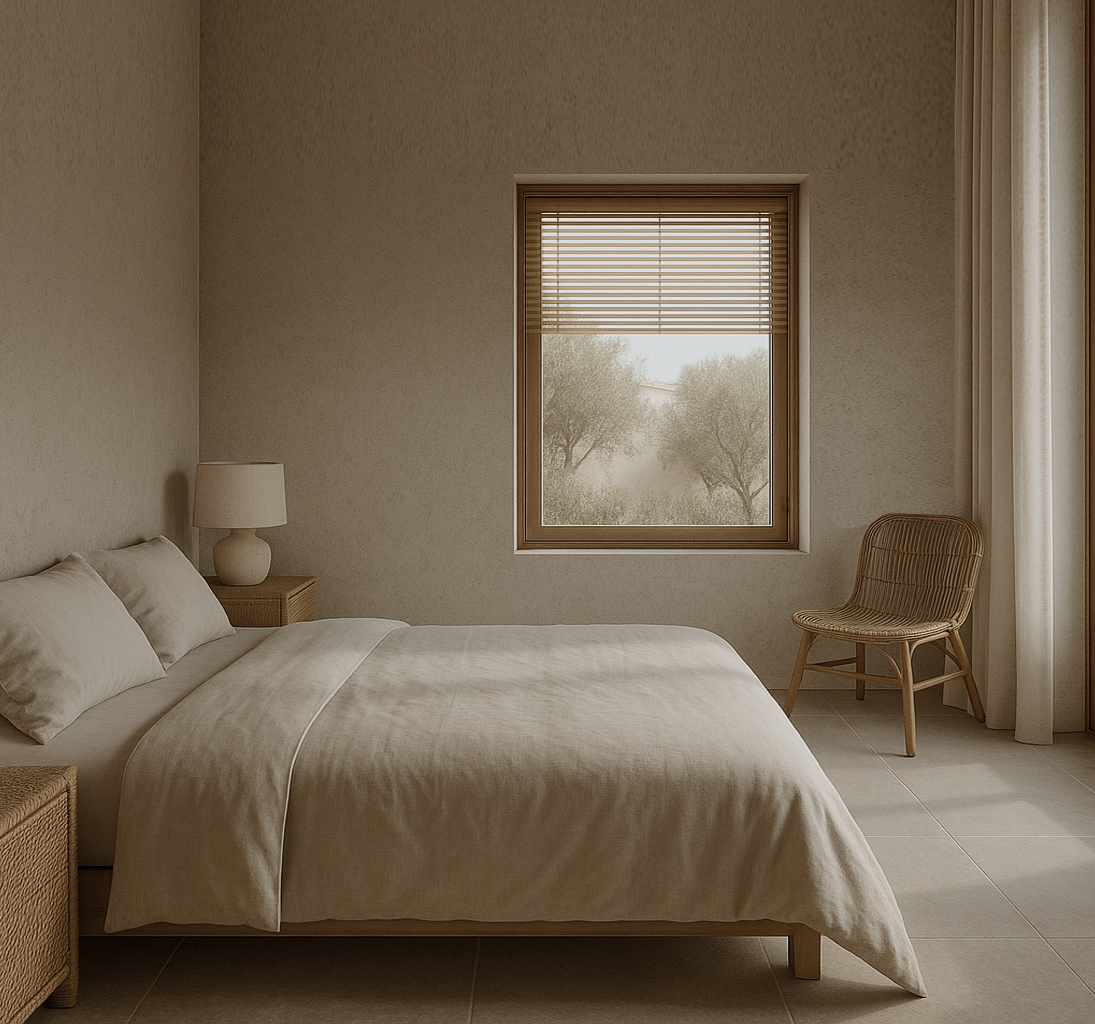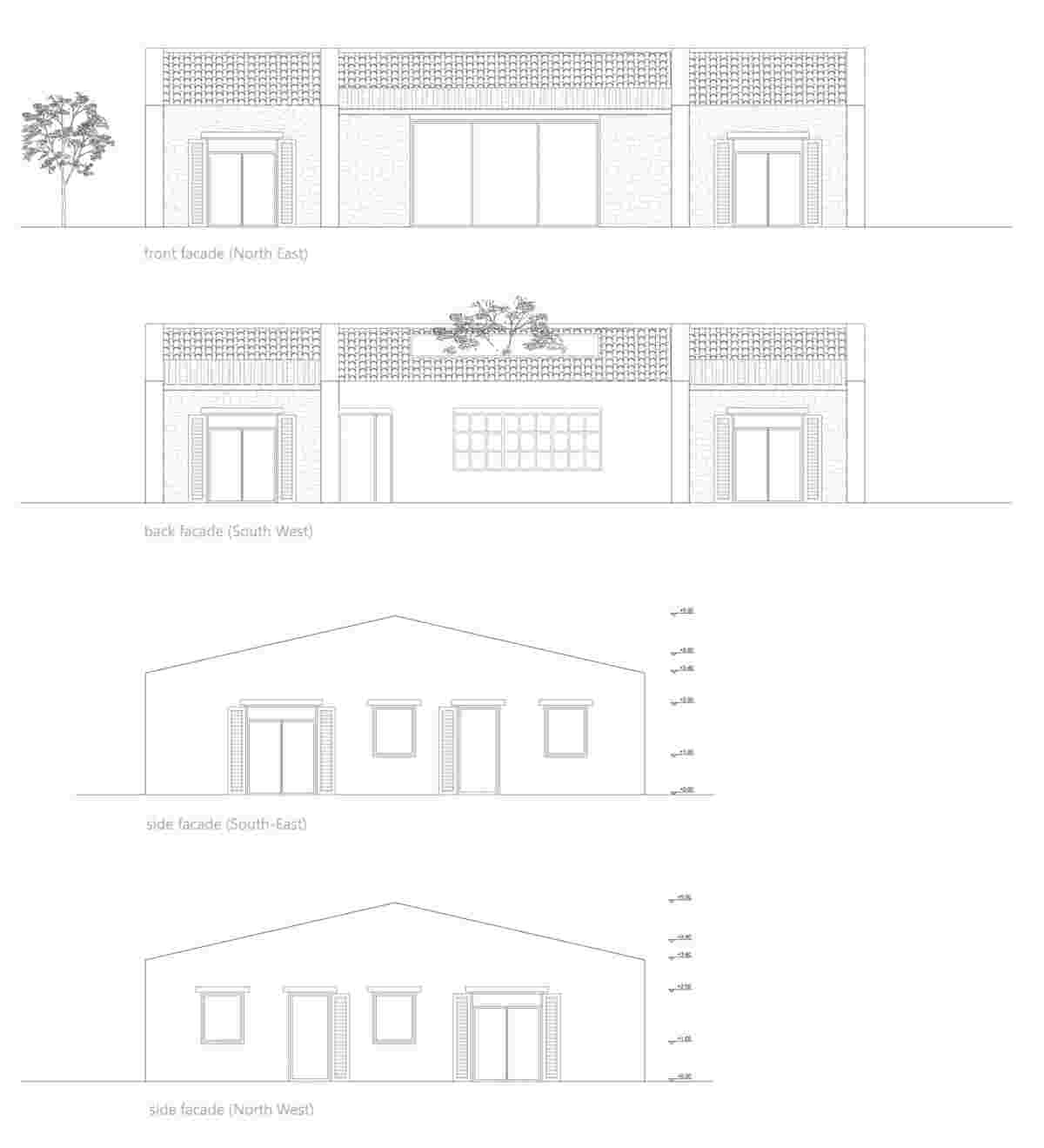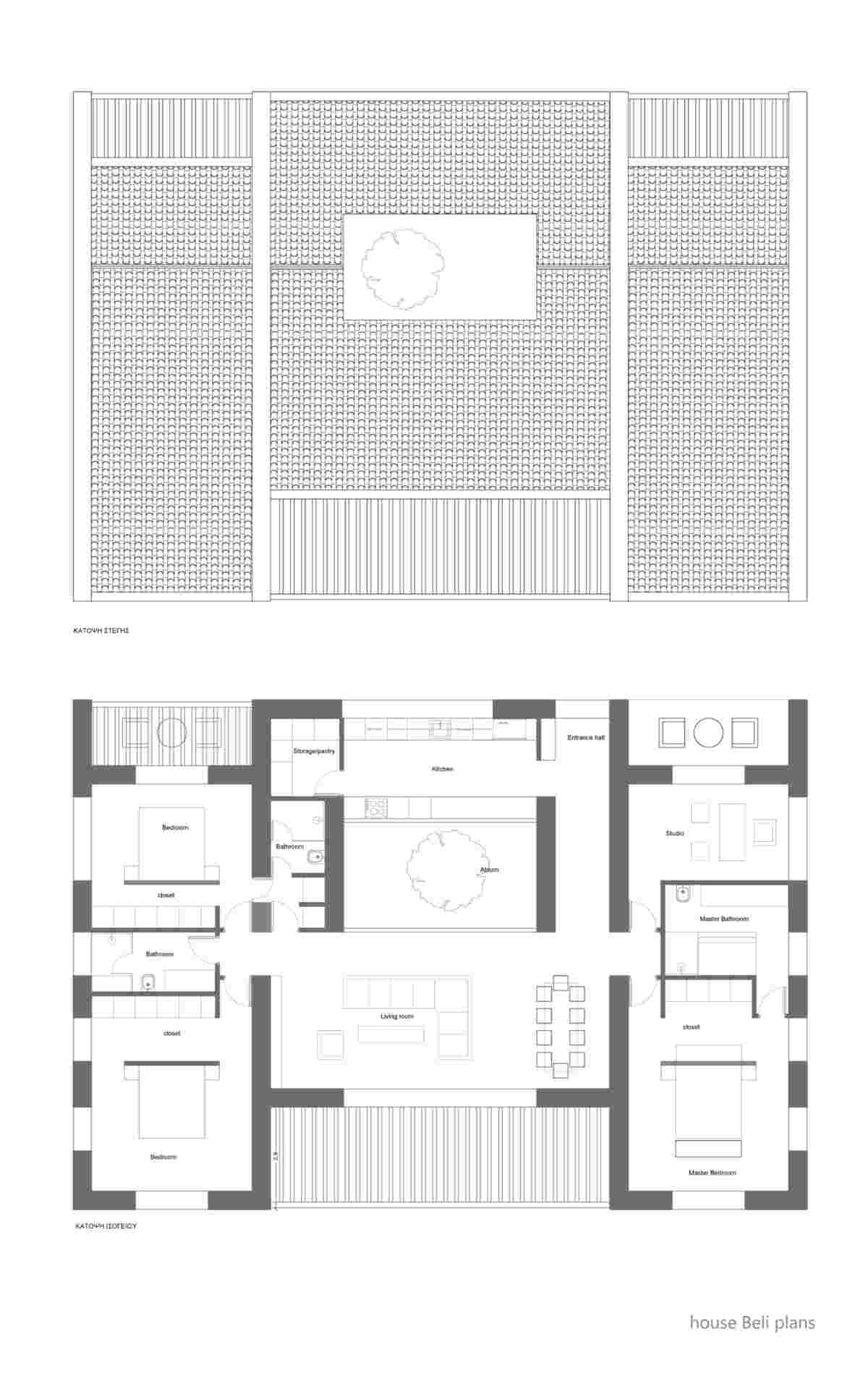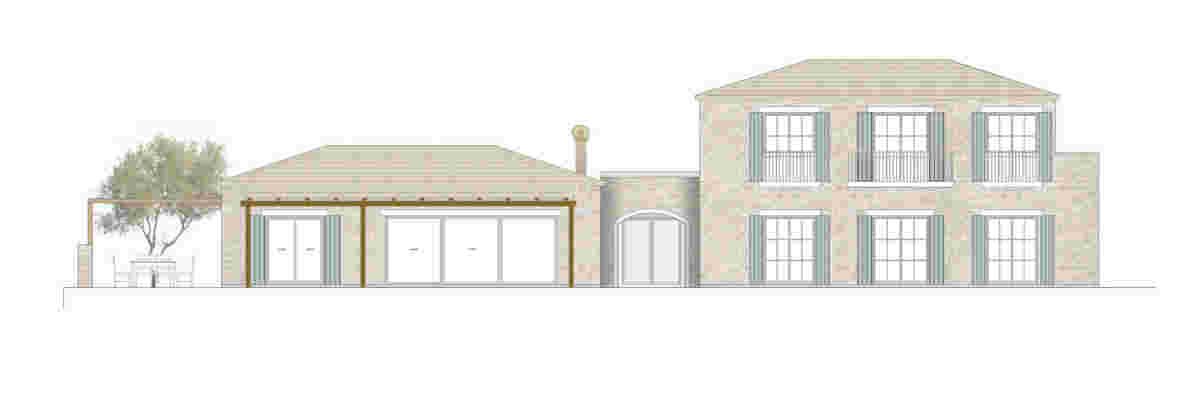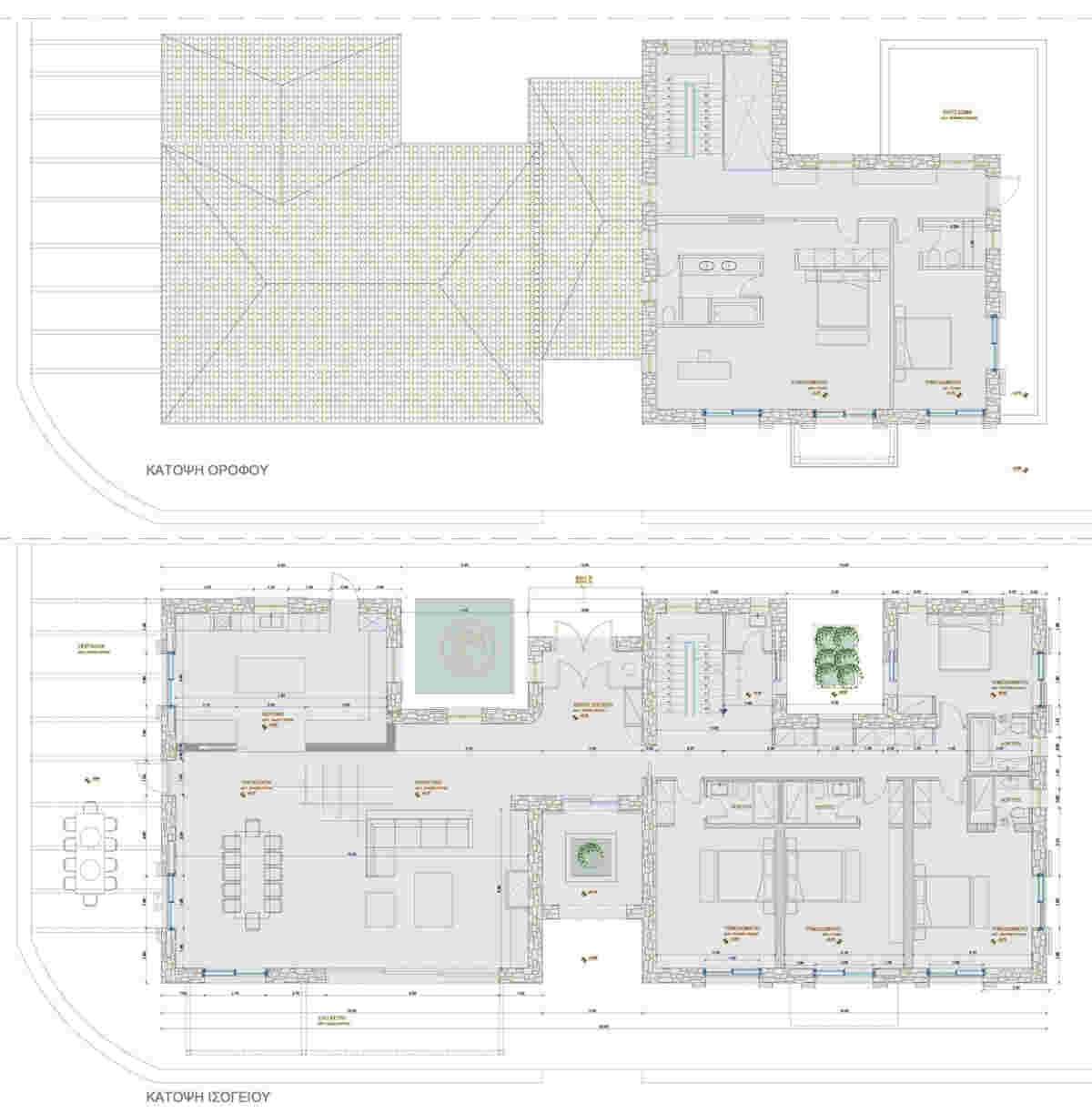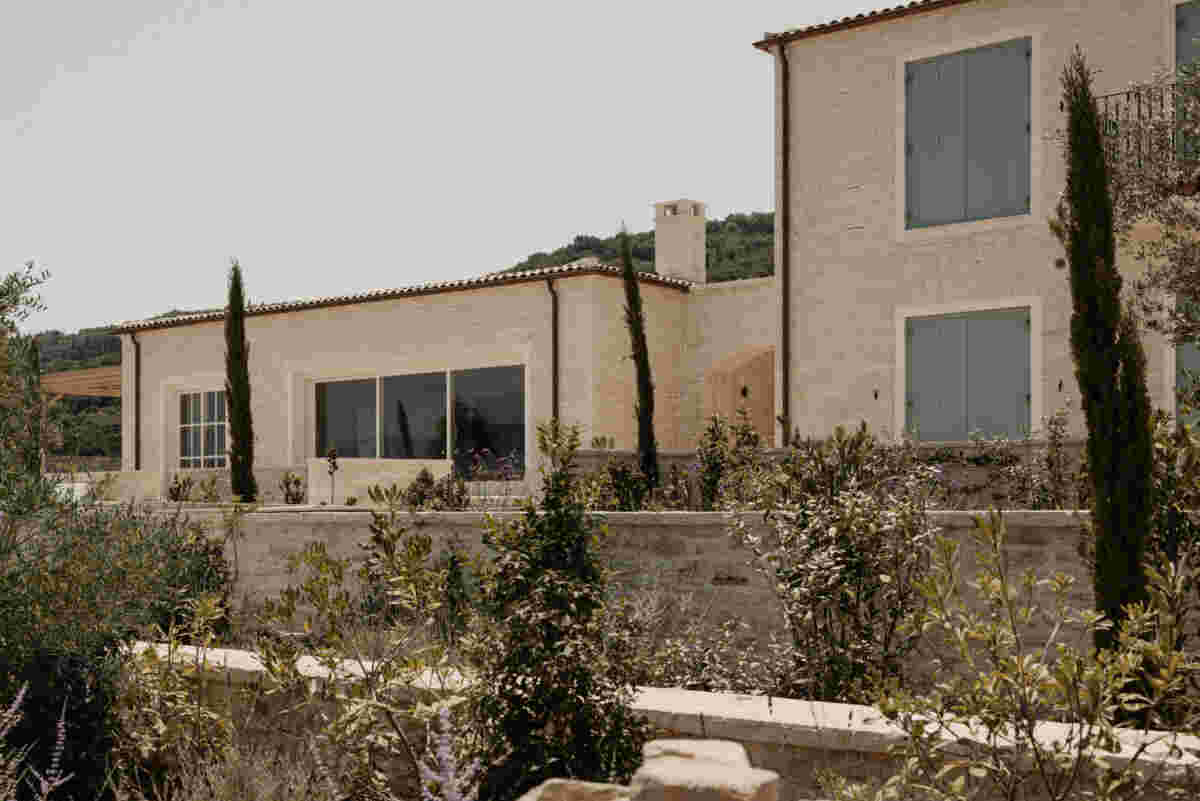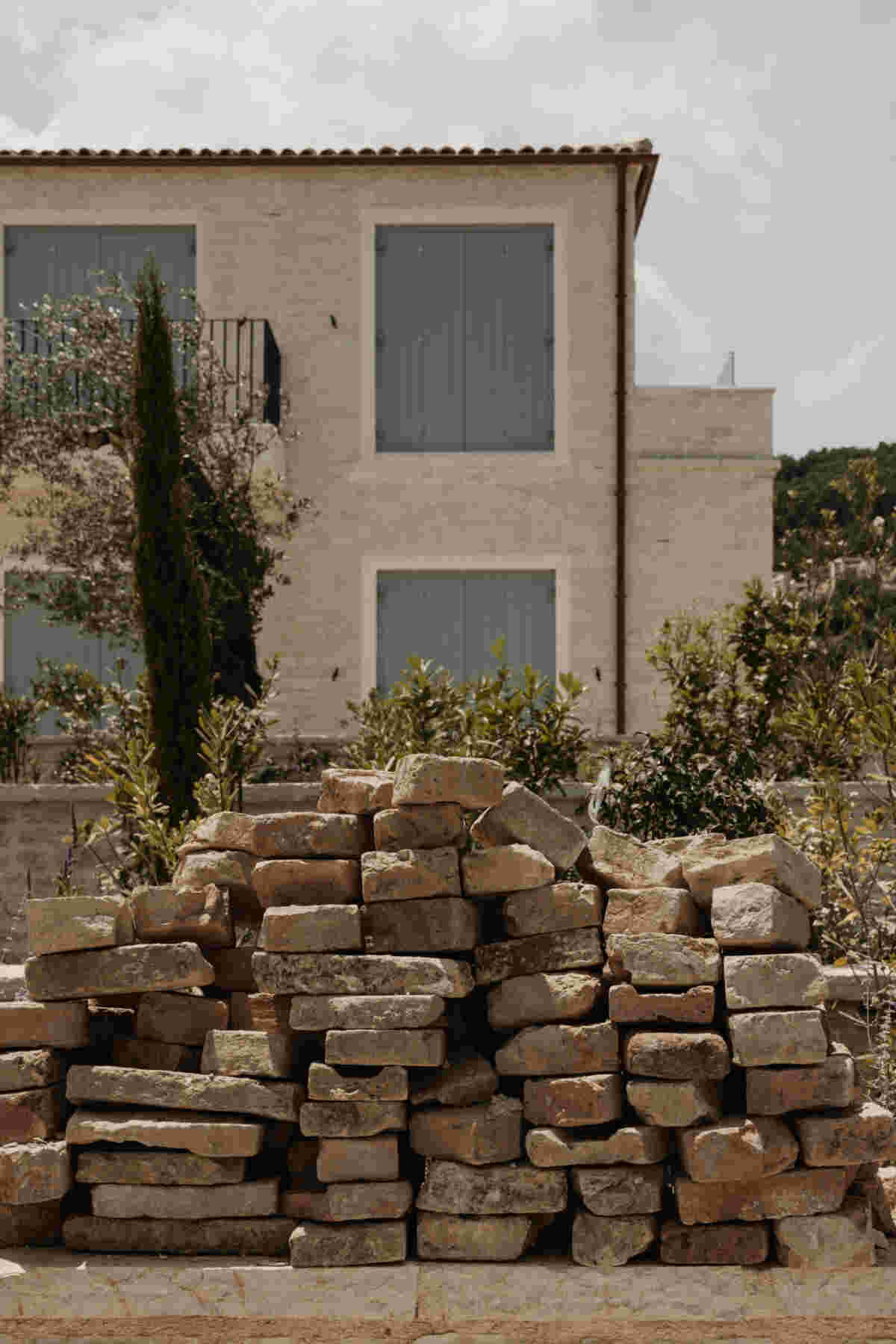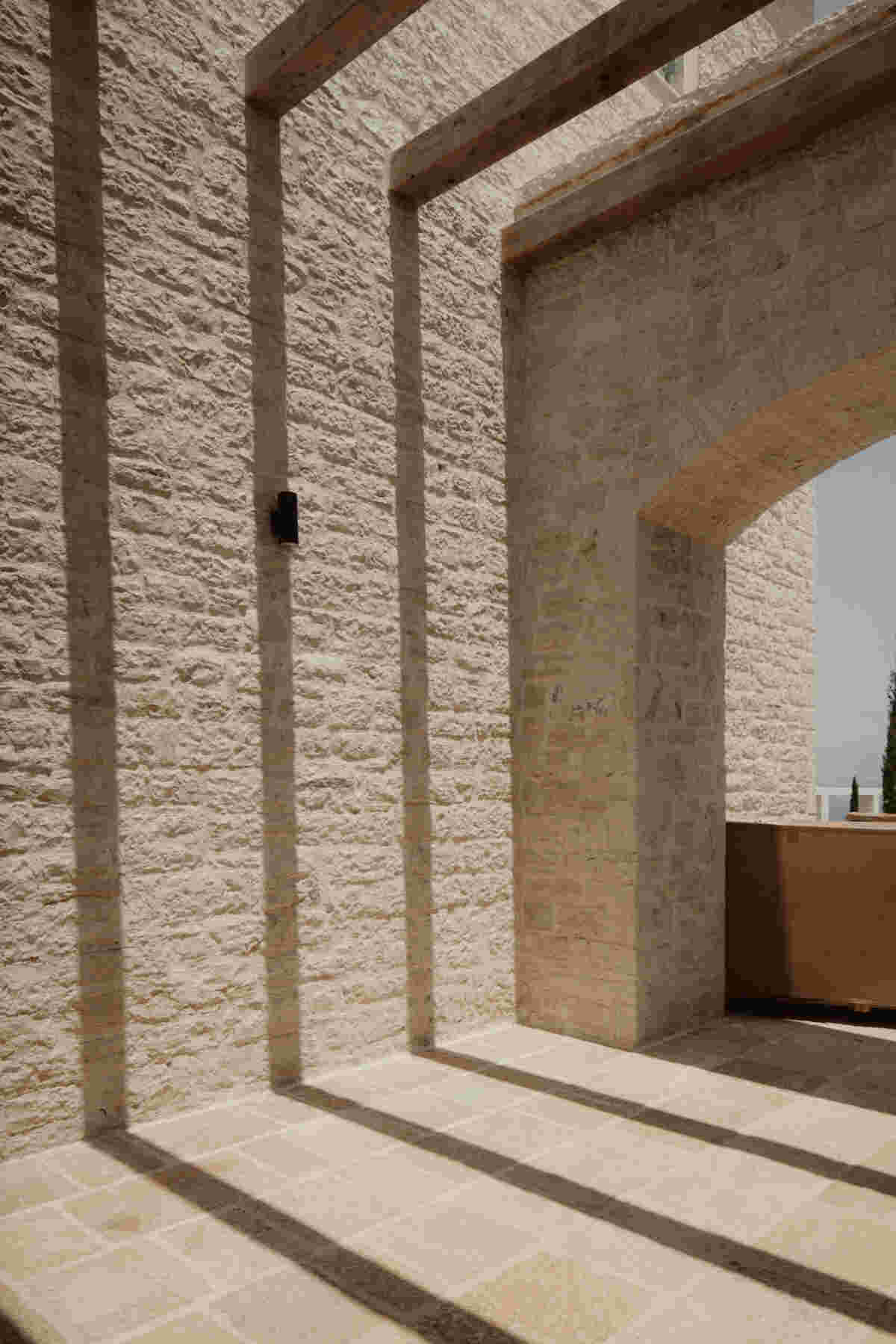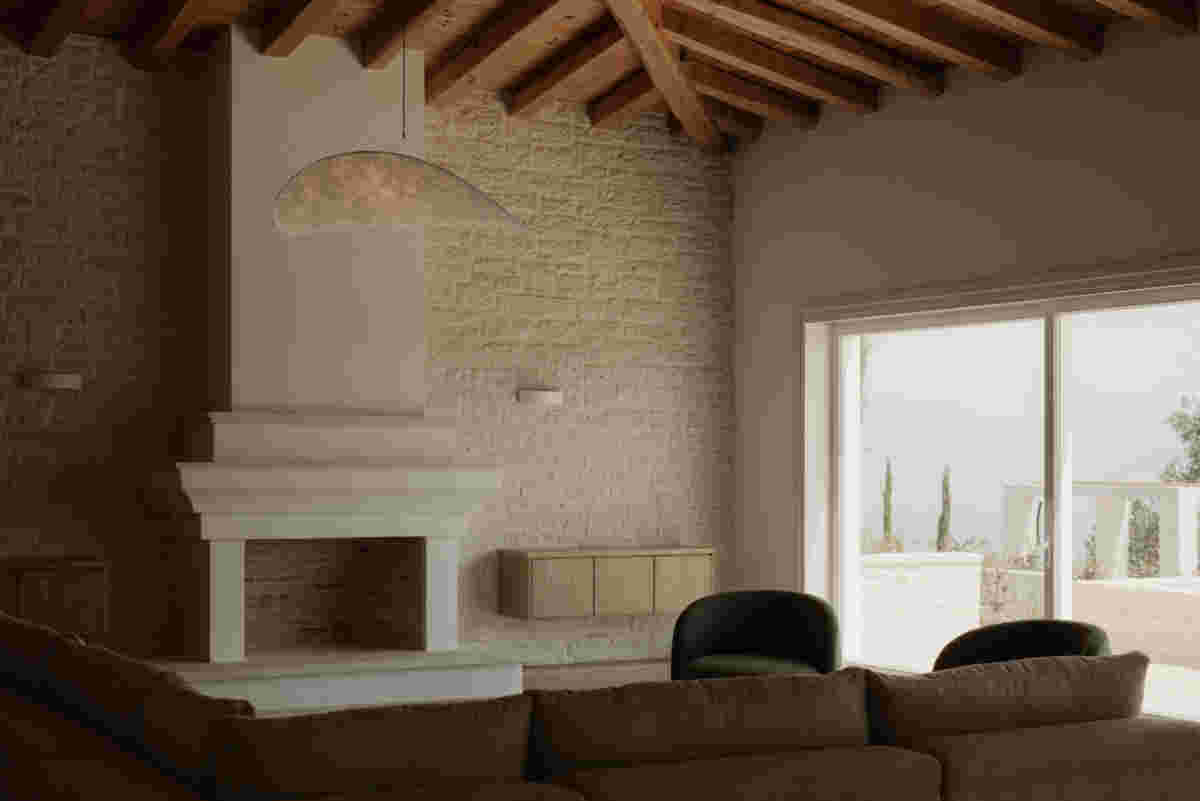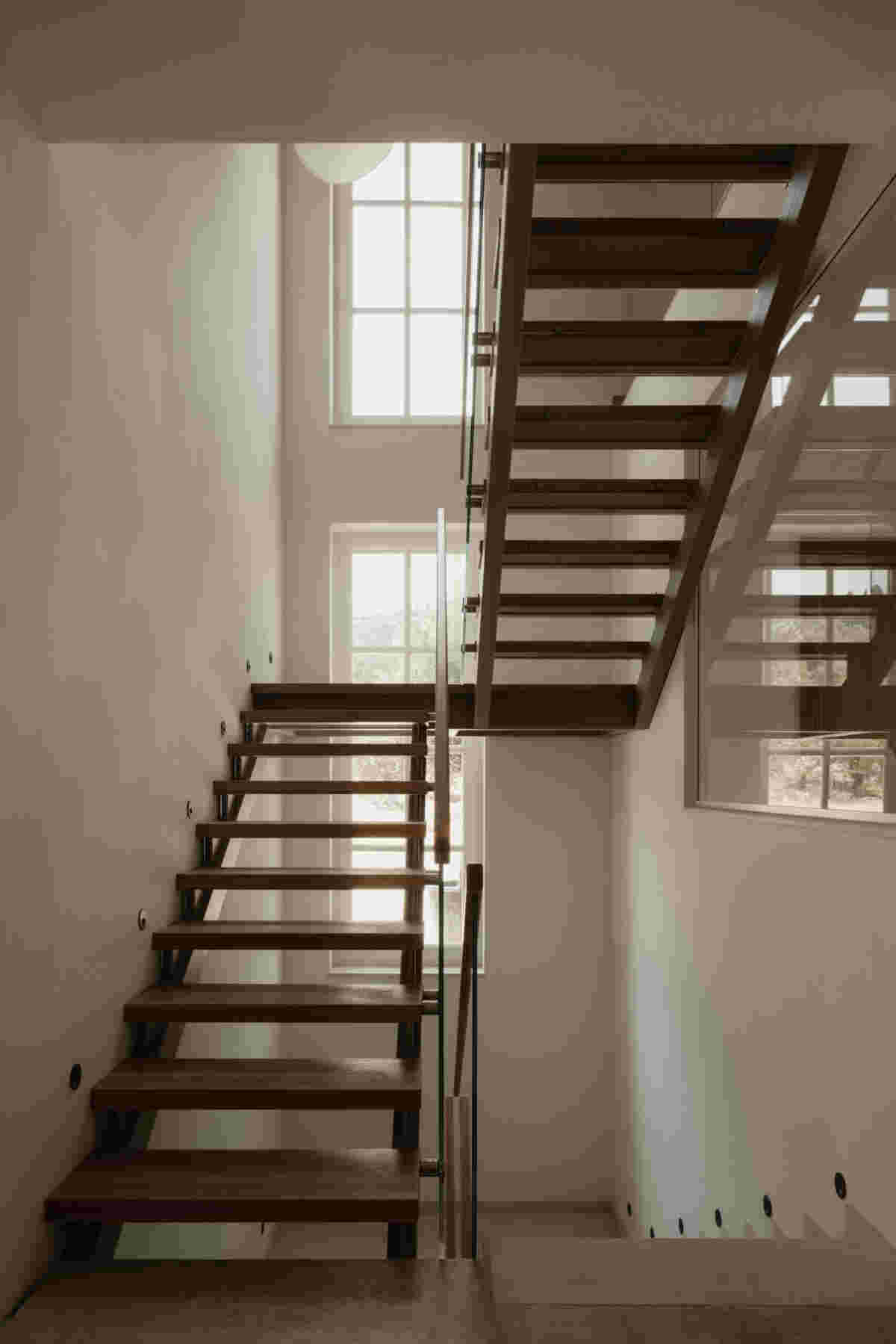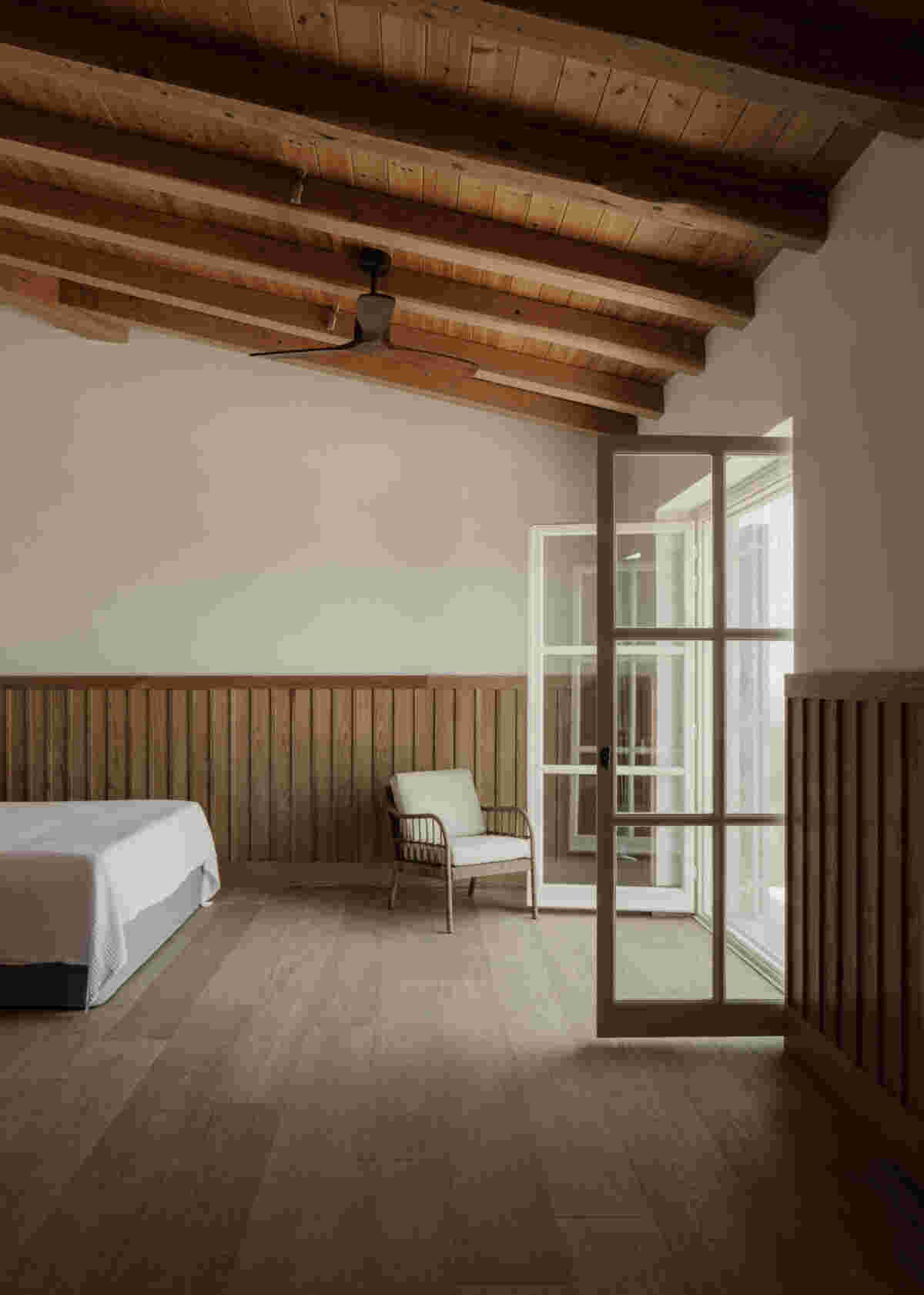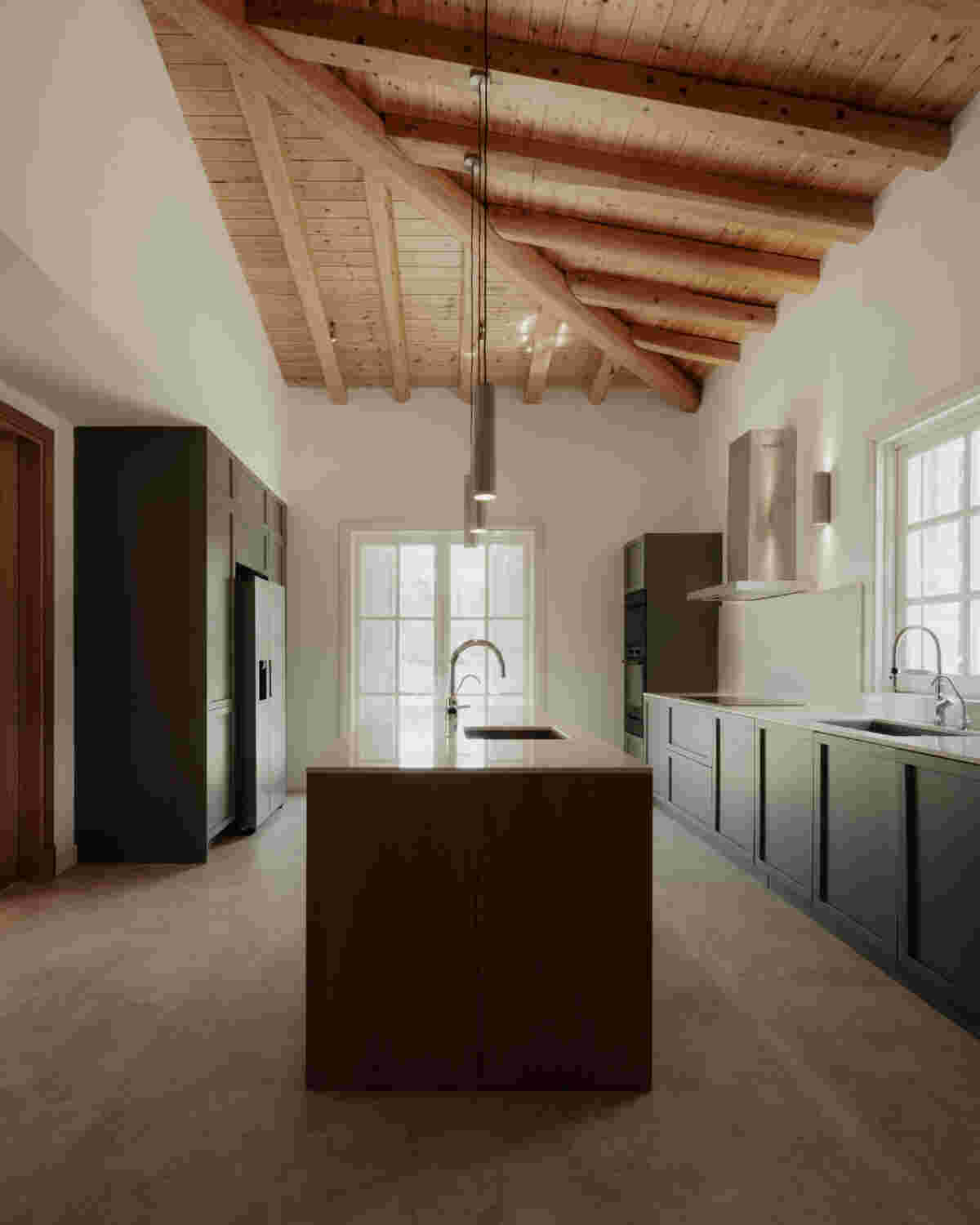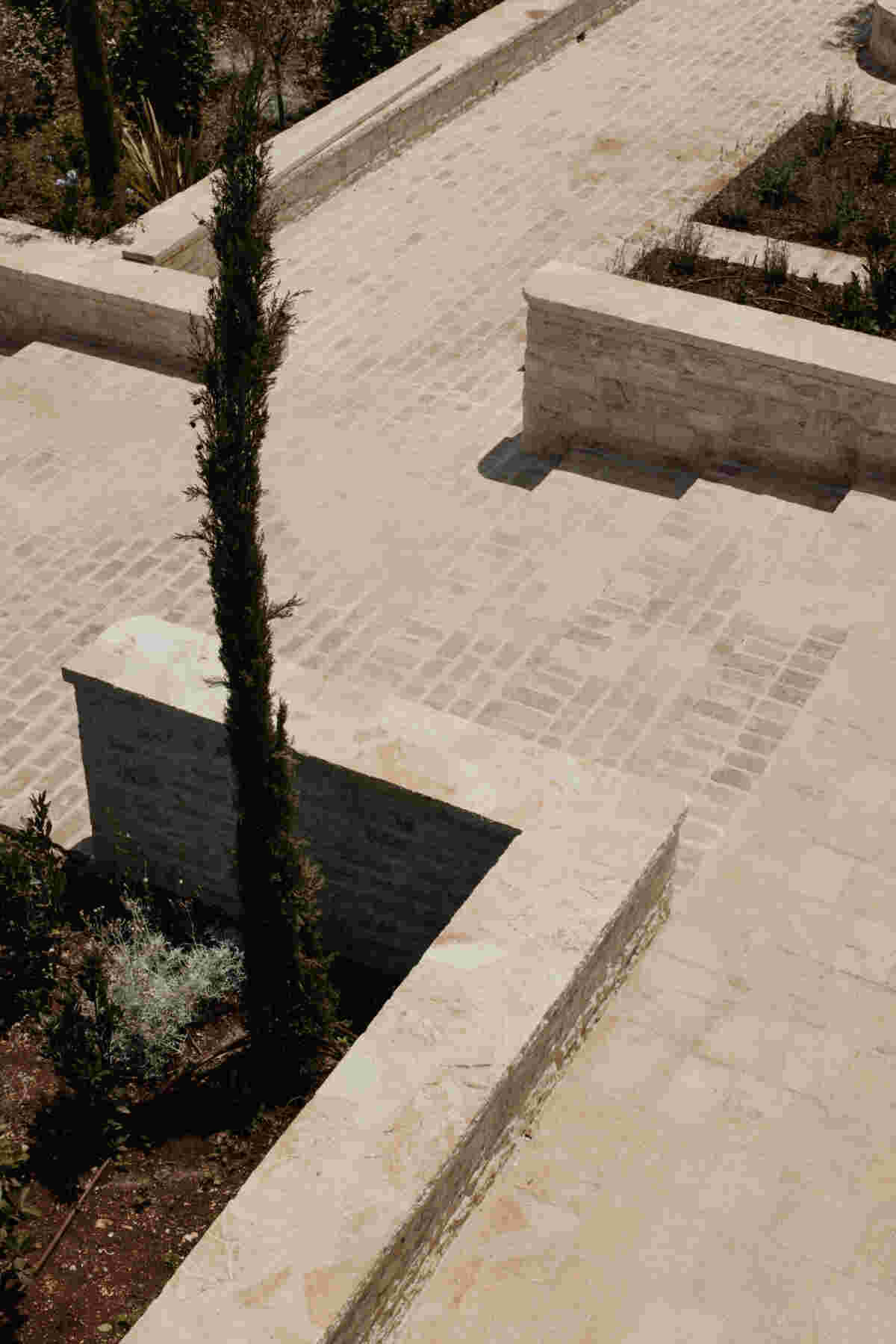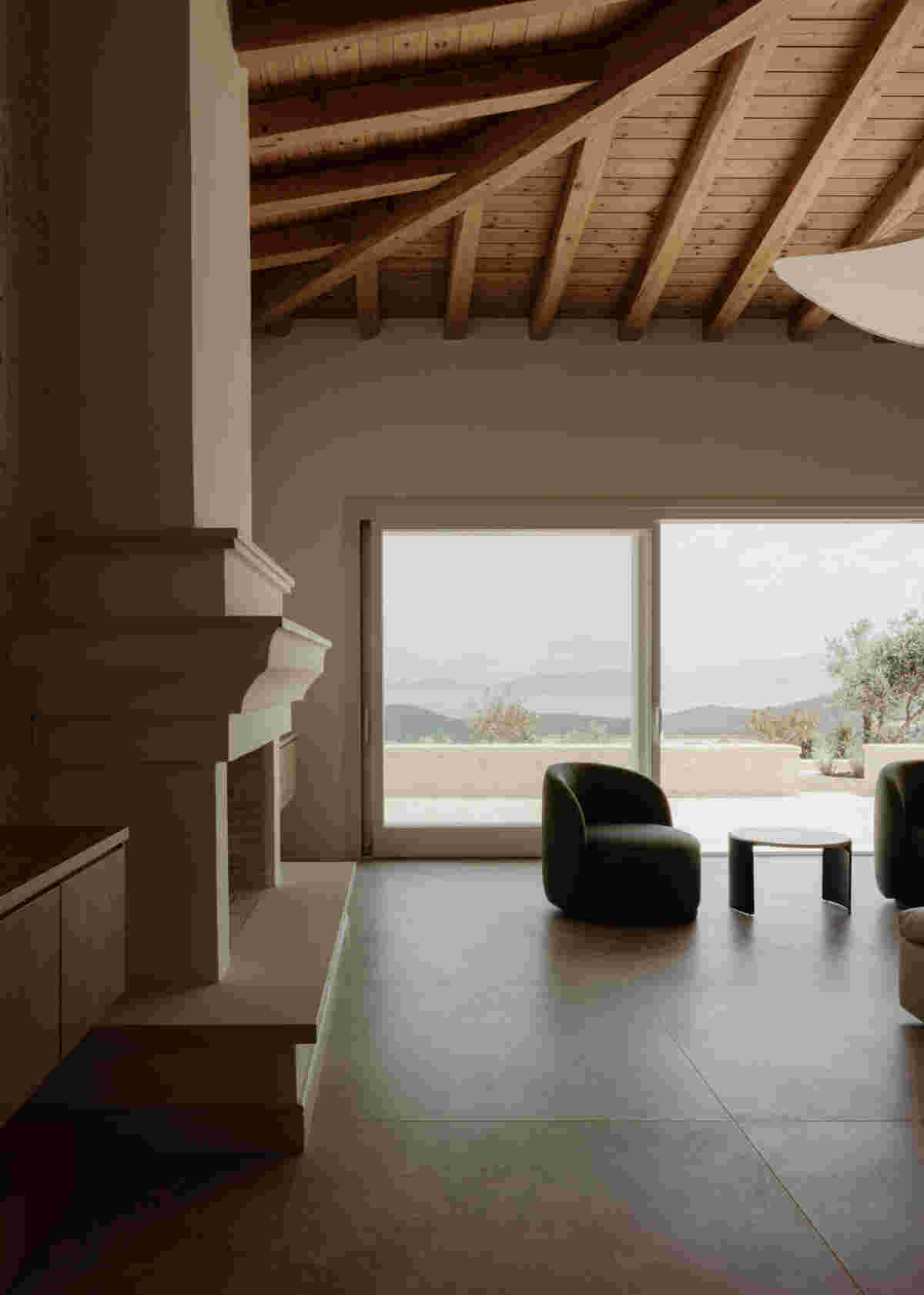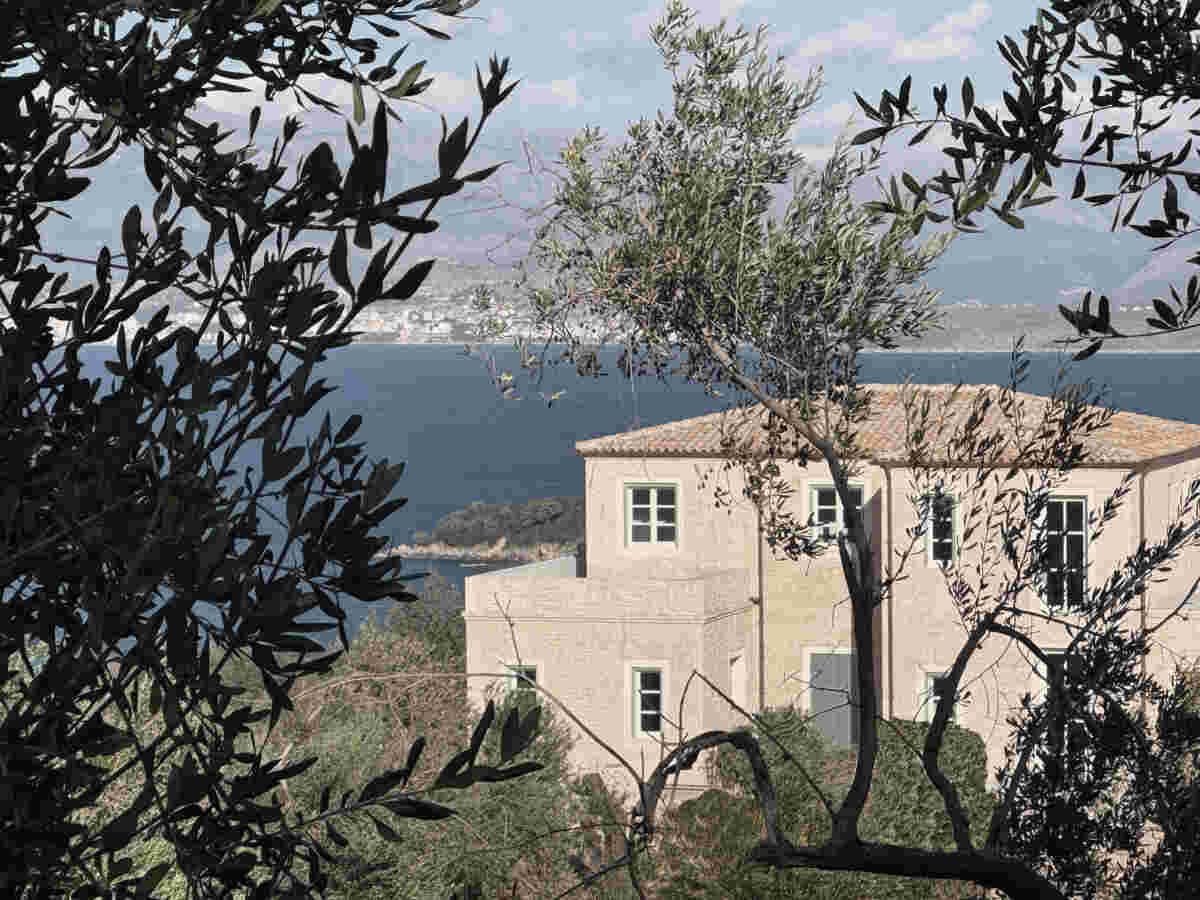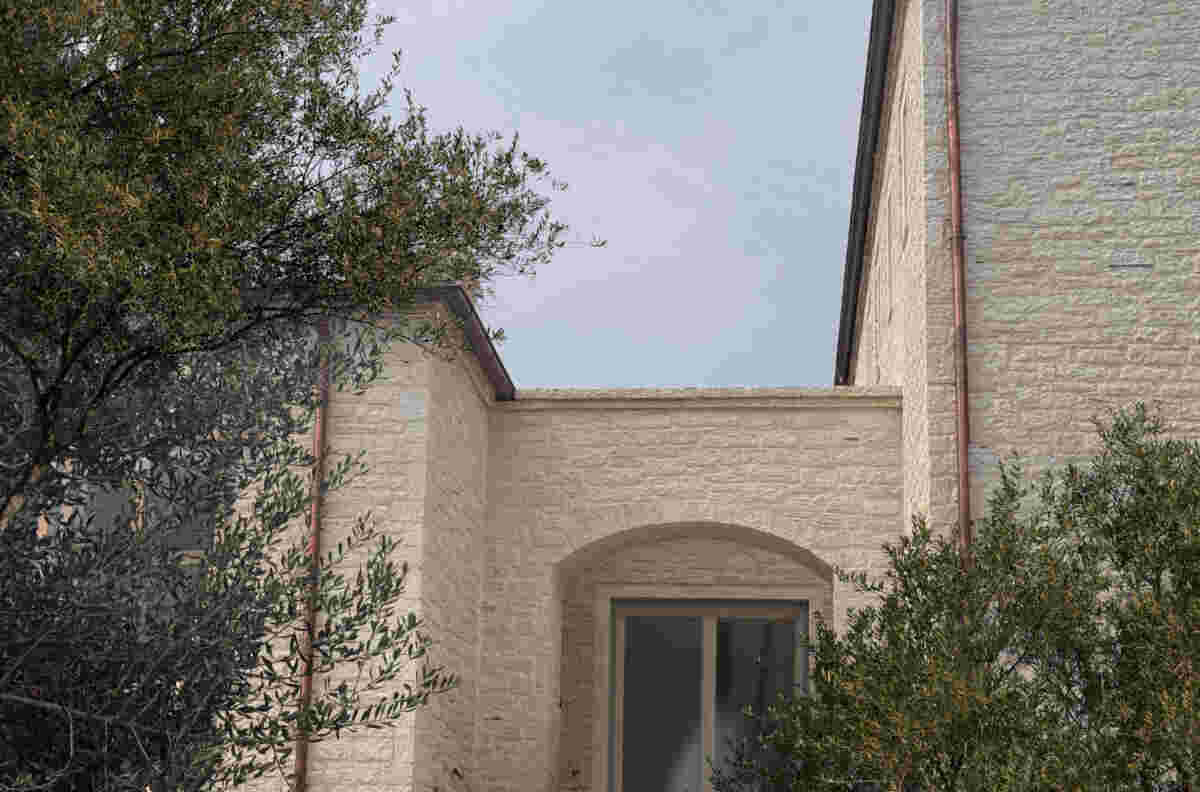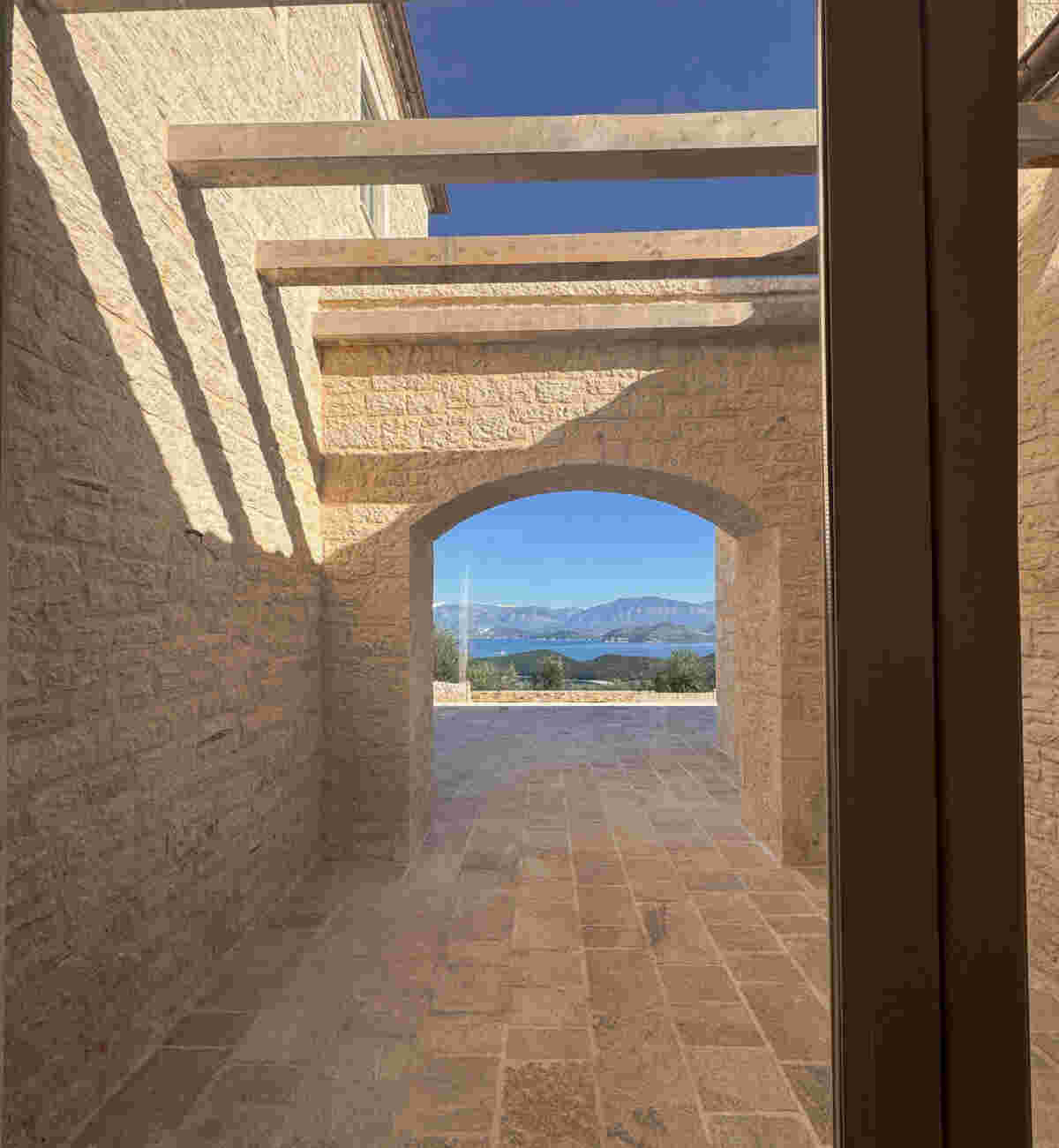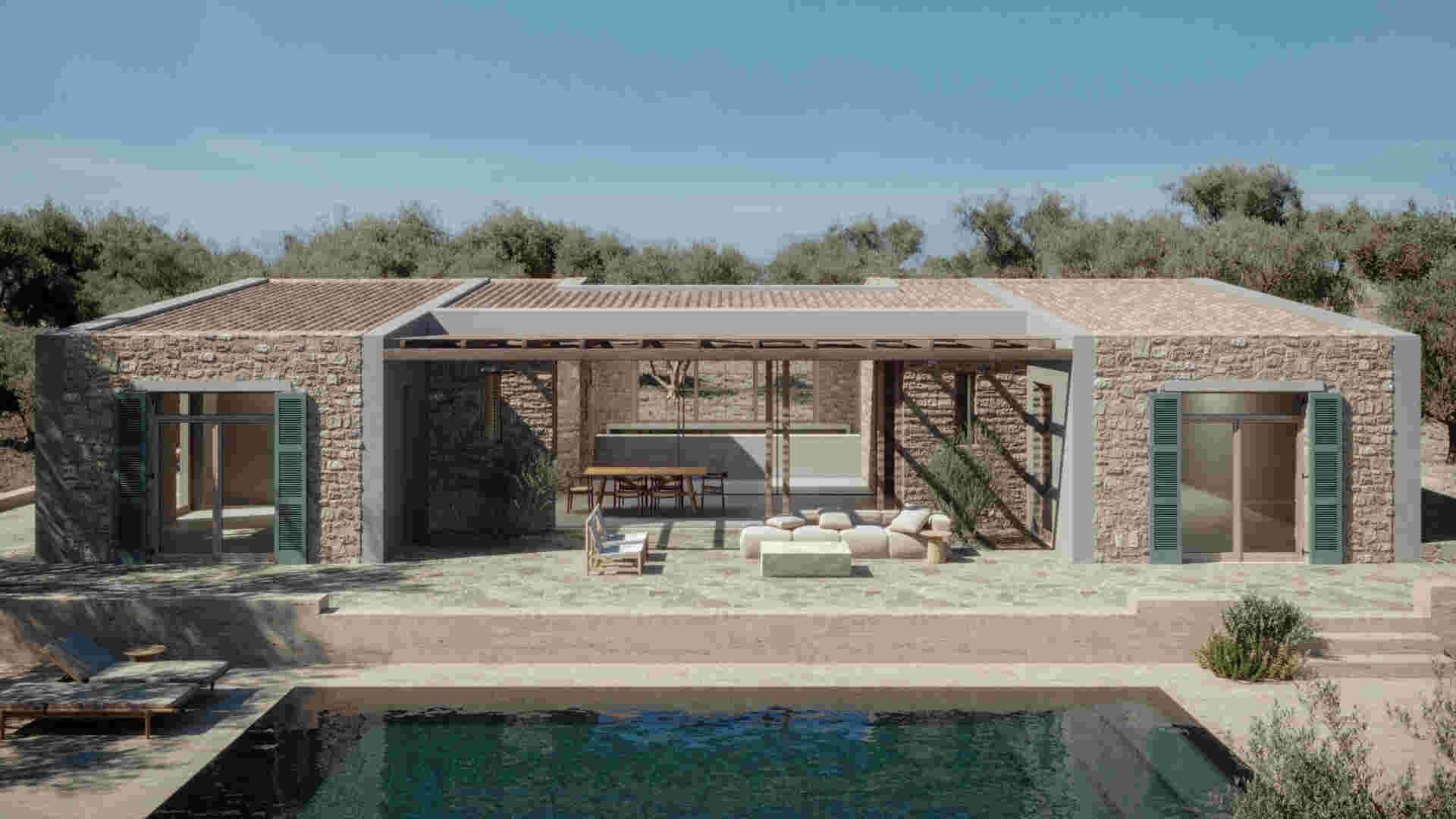
A residential complex in an olive grove.
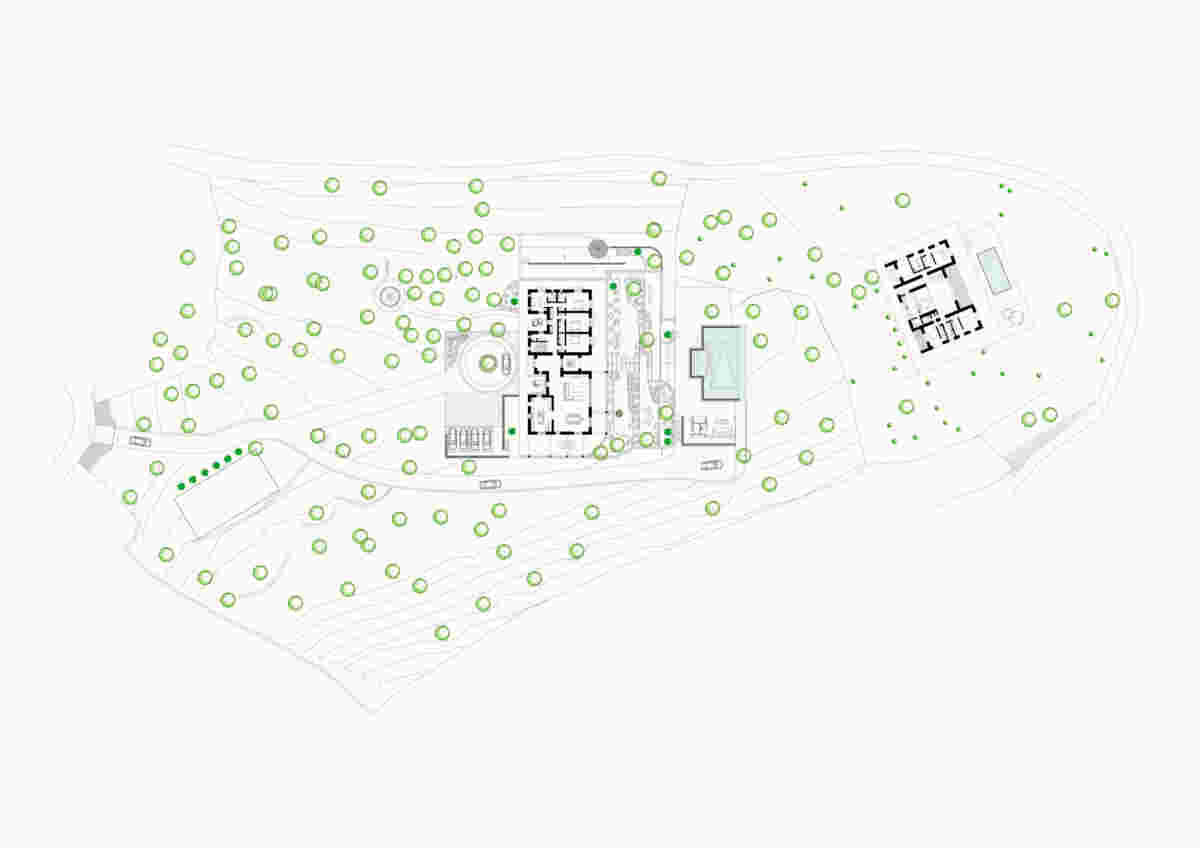
Beliha complex consists of Villa Beliha and House Bel. Villa Beliha is situated on a hillside overlooking the adriatic sea, a scenic view with the mountainous terrain of Albania in the background. The foreground features olive trees, characteristic of Mediterranean landscapes. The residence is designed in a traditional architectural style, characterized by a stone facade and a sloped roof. This design effectively merges conventional elements with modern alternatives, creating a harmonious blend of heritage and contemporary aesthetics. House Beli is a modern Mediterranean-style house that seamlessly blends with its natural surroundings. The structure features a combination of stone and contemporary materials, with large openings that invite ample natural light. The design of the complex emphasizes landscape integration, featuring shaded outdoor spaces that promote outdoor living and interaction with the natural environment. This arrangement underscores a commitment to sustainability enhanced by the abundant greenery, which contributes to a tranquil and inviting atmosphere.
The architectural design incorporates stone, wood, and marble as primary materials, selected for their durability and aesthetic resonance with the local context. The stone façade provides structural integrity and weather resistance, harmonizing seamlessly with the surrounding landscape. Wood is utilized in framing, roofing, and outdoor elements, imparting warmth and fostering natural ventilation, while marble accents, particularly in features such as the fireplace, introduce an element of elegance and sophistication. This material palette reflects modern sensibilities rooted in the traditional rural architectural techniques of Corfu, ensuring a respectful nod to local heritage. From a technical standpoint, the construction employs traditional masonry methods for the stonework, alongside advanced treatments for wood to enhance longevity. The design emphasizes sustainability by using locally sourced materials to reduce the ecological footprint, while integrating energy-efficient systems and contemporary materials to optimize operational efficiency.
